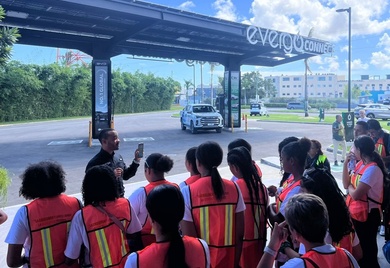Four Strategies to Harness the Potential of the Amazon Region’s Superfoods

The Amazon Basin, home to the world’s largest tropical rainforest, is a treasure trove of natural resources and biodiversity.
This region, spanning eight South American countries, is crucial for global climate regulation and for the livelihoods of over 30 million people, including many Indigenous and Afro-descendent communities.
However, the Amazon region faces significant challenges due to unsustainable environmental practices and deforestation, which threaten its rich biodiversity and its inhabitants' traditional ways of life.
The Promise
Promoting superfood value chains is one promising avenue for fostering sustainable and inclusive development in the Amazon basin.
Superfoods, known for their high nutritional value and health benefits, present a unique opportunity to drive economic growth while preserving the environment.
WATCH: Opportunities for Sustainable Growth in the Amazon Region.
(Content in Spanish. Select Settings/Subtitles/Auto-translate to watch in your chosen language).
The Amazon region's rich biodiversity includes superfoods such as the Amazon nut, quinoa, sesame, avocado, and cacao, which have significant market potential.
Key Strategies
A holistic and medium-term approach is essential to harness the potential of superfoods. Our recent DEBrief on this issue recommends recognizing the local context, culture, and stakeholder priorities. Key strategies include:
- Traceability and Quality Certifications: Implementing robust traceability systems and obtaining quality certifications are crucial for accessing global markets. These measures ensure that products meet international standards and appeal to environmentally conscious consumers.
- Support for Local Producers: It is vital to provide local producers with access to specialized agricultural inputs, services, and markets. This support helps small-scale farmers improve productivity and diversify their offerings, leading to higher value-added processes.
- Private Sector Engagement: Building the private sector's capacity to develop sustainable and inclusive products is essential. Companies can contribute to the restoration of degraded land, invest in low-carbon agricultural practices, and adopt models that increase productivity without expanding agricultural land.
- Public-Private Collaboration: Effective collaboration between governments and the private sector is critical. Governments can remove market distortions, encourage sustainable foreign direct investment, and enforce environmental safeguards linked to exports.
Overcoming Challenges
Despite the potential benefits, several challenges exist. Small-scale producers often lack access to financing, technical assistance, and modern agricultural technologies.
Additionally, the region faces land insecurity, criminal violence, and the high transaction costs associated with fragmented production bases.
JOIN A COMMUNITY OF 40,000 DEVELOPMENT LEADERS
GET THE LATEST ON OUR PROJECTS AND KNOWLEDGE

Addressing these challenges requires coordinated efforts and innovative solutions.
Promoting sustainable superfood value chains in the Amazon basin offers a pathway to economic growth, environmental conservation, and improved livelihoods for local communities.
By leveraging the region's rich biodiversity and fostering collaboration across sectors, we can unlock the full potential of the Amazon region's superfoods, ensuring this vital region's sustainable and prosperous future.
LIKE WHAT YOU JUST READ?
Subscribe to our mailing list to stay informed on the latest IDB Invest news, blog posts, upcoming events, and to learn more about specific areas of interest.
Subscribe



